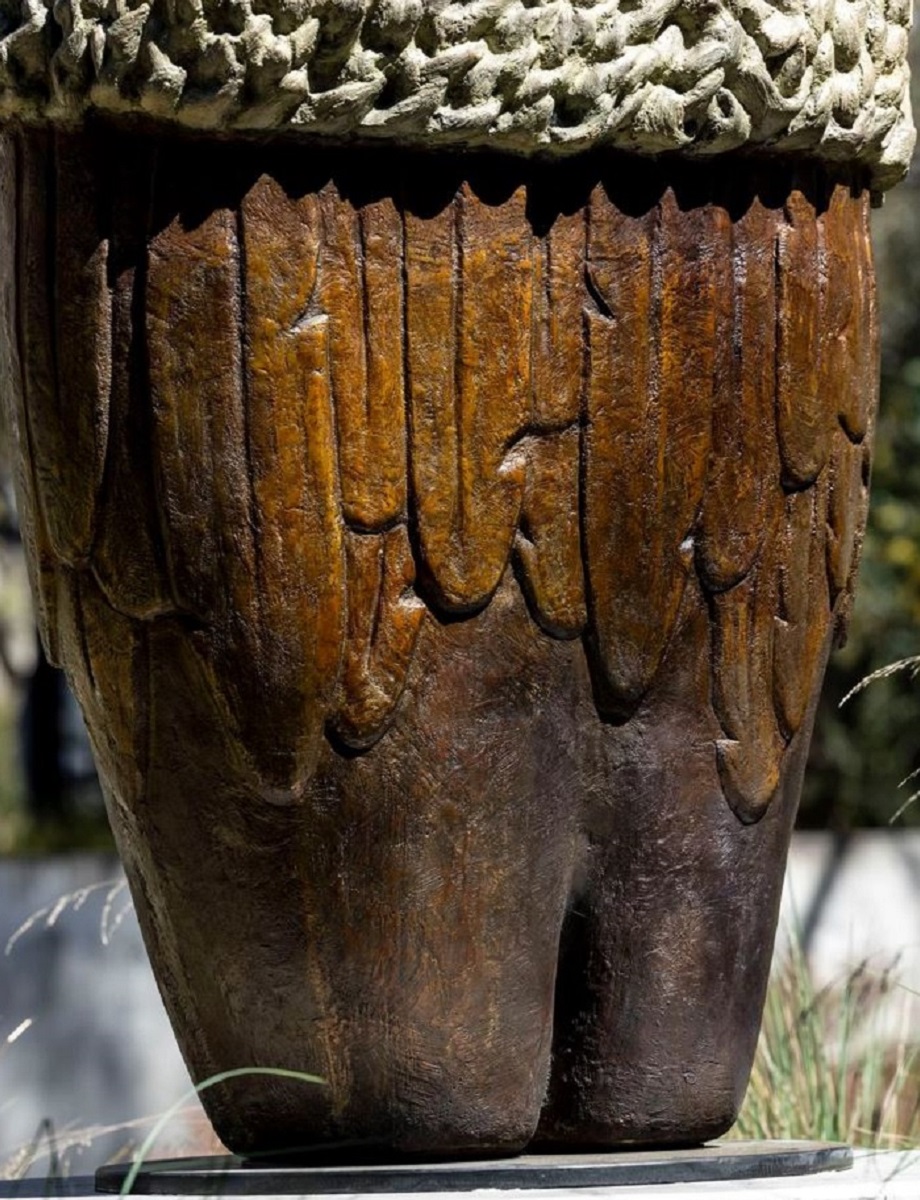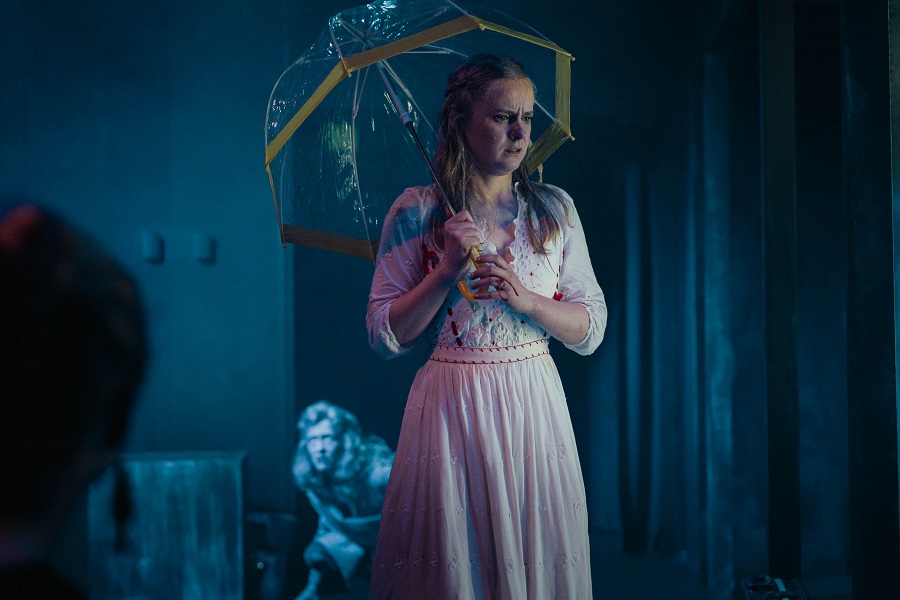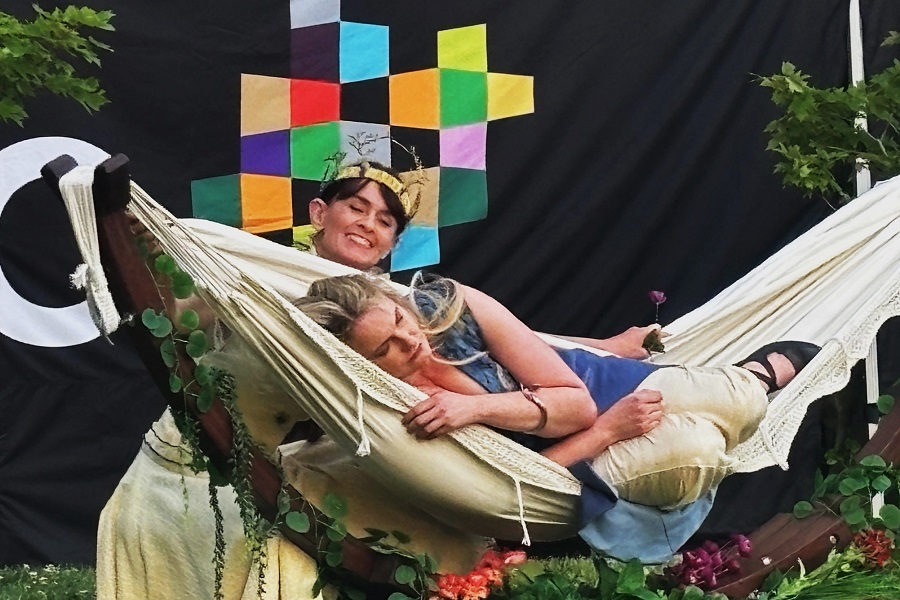
Art / “Sister Charm” by Janet Fieldhouse. At the National Gallery of Australia sculpture garden, until mid-2024. Reviewed by BARRINA SOUTH.
ON a typical Canberra spring morning, in my puffer jacket, I made my way to the National Gallery’s sculpture garden to see the latest commission by Kalaw Lagaw Ya/Meriam Mir artist Janet Fieldhouse.
Fieldhouse has recently been commissioned to produce a work as part of the National Gallery NG x Art Makers Series, Fieldhouse’s work is the second commission under the program.
I urge everyone to take the time to sit with this sculpture not only because it is one of a rare few public sculptures commissioned by a Torres Strait Islander on display in the world, but more importantly “Sister Charm” will impart her inner spirit with you.
Fieldhouse’s piece is located by the small bridge that crosses the water feature running through the sculpture gardens. This location is not by chance, I learn that the sculpture “Sister Charm” is situated near water as there is a strong connection to water for the Torres Strait Islander people.

“Sister Charm” stands on a plinth at 2.7 metres in height on a mound surround by native grasses. Fieldhouse art works or charms are usually intimate small works, standing no more than 10cm in height. It is a triumph for Fieldhouse that she has been able to maintain the intimacy of her work, now on a grand scale. “Sister Charm” is wrapped in a woven shawl, inscribed feathers drape down the body, a turtle image is imprinted on the figures side and the charm holds a large feather.
I was captivated by the sculpture and celebrate it as a unique expression where the visitor to the National Gallery is offered an insight into Torres Strait Islander culture from a female perspective.
The viewer learns that the symbols such as the feathers are a reference to the Dari head dress of the Torres Strait Islanders and the imprint of a turtle, a totem. As Fieldhouse has explained: “My family, my Torres Strait Islander heritage and my culture are my inspiration and are integral to my art. Art and my practice is important to me because it gives me a sense of belonging in my family, my heritage and my culture.”
The Noisy Minor fly from tree to tree chasing the Currawongs, as the native grasses sway rhythmically in the breeze, I delight interpreting the tufts surrounding “Sister Charm” as waves of the ocean. As I walked around the piece, I notice that “Sister Charm” is within the view of the sculpture that sits at the entrance of the gallery by Thancoupie, an Aboriginal artist from Weipa in far-north Queensland. I later learn that Thancoupie mentored Fieldhouse and the women’s work seem to be in conversation with each other.
Fieldhouse is modest despite being an accomplished artist who has won prizes, untaken residencies in Japan and the US and whose work is highly sort after.
“Sister Charm” will be on display until next year with the hope of being acquired as part of the gallery’s collections.
Who can be trusted?
In a world of spin and confusion, there’s never been a more important time to support independent journalism in Canberra.
If you trust our work online and want to enforce the power of independent voices, I invite you to make a small contribution.
Every dollar of support is invested back into our journalism to help keep citynews.com.au strong and free.
Thank you,
Ian Meikle, editor




Leave a Reply